Hints for Riding a Bus
During peak season along the Kumano Kodo in the fall and spring, public buses can be busy, especially those departing from Kii-Tanabe and in the mornings from the Hongu area. Here are some tips that may help make bus travel go smoothly.
●Tell the bus driver where you want to get off when boarding
●Buy same-day tickets from the machine inside the TANABE Tourist Information Center.
●Prepare exact change for bus fare in advance.
●Pay once for an entire group.
●Arrive early at the bus stop if you want a seat.
●Hold backpack on your lap to make room for other riders.
●Do not rush to get off.
Explanation
There is a network of public busses throughout the area to access many of the villages in the mountains. Riding a local bus is easy once you learn the basic system as outlined below. In some of the more remote areas, busses run less frequently, so please plan accordingly.
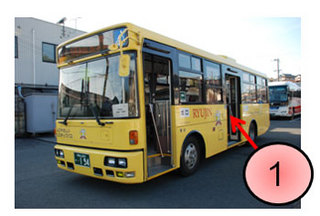
1. Enter through rear door (or front door if only one)
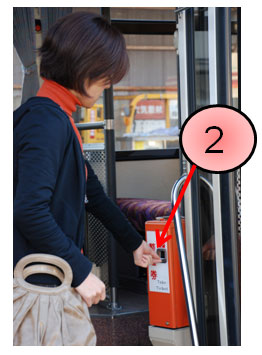
2. Take number ticket
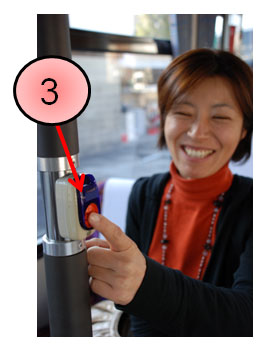
3. Push button to inform driver that stop is wanted (it is also good practice to tell the driver where you want to get off when you board)
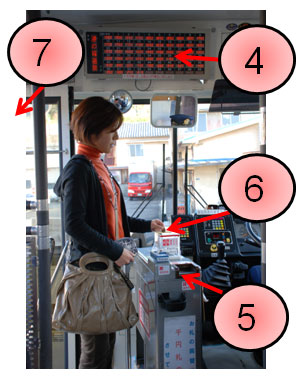
4. Match number ticket to the electronic fare chart at the front of the bus to determine fare (prices change according to distance travelled)
5. Change money if needed
6. Put money and ticket in fare box (exact fare)
7. Exit through front door
Fare Box & Change Machine
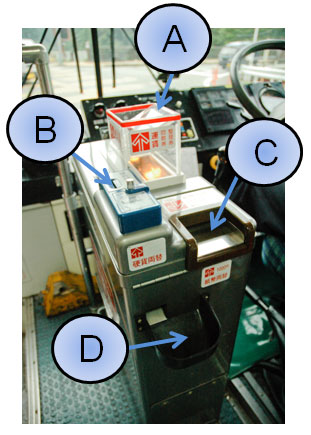
A. Fare Box
B. Insert coins for change
C. Insert bills for change
D. Change dispenser
How to Ride a Local Bus Video
Bus Payment Options
Four bus companies operate in the Kumano area.
While not all of them accept alternative forms of payment, ALL of them accept cash, exact change.
We break down which accept IC cards, code payments, and credit cards below.
Ryujin Bus Company
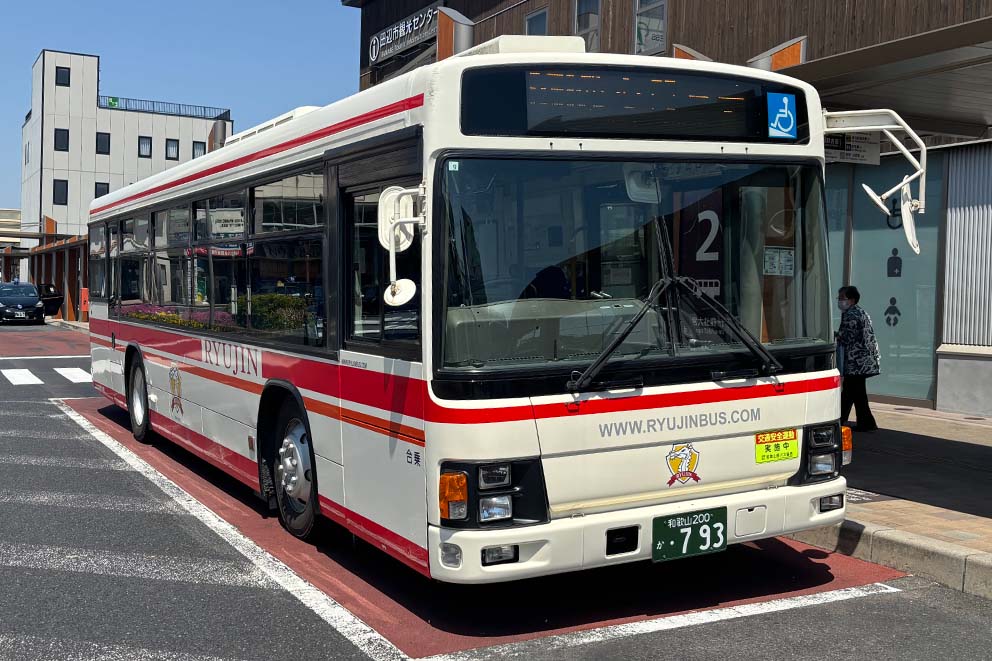
Area of Operation: Between Kii-Tanabe and Hosshinmon-oji/Hongu, and Ryujin Village.
Payment Options: Cash, QR code: PayPay, dbarai, RPay, auPAY, LINEPay, FamiPay, Alipay
Does NOT accept: IC cards, credit cards
Ryujin Bus Company website (English) >>
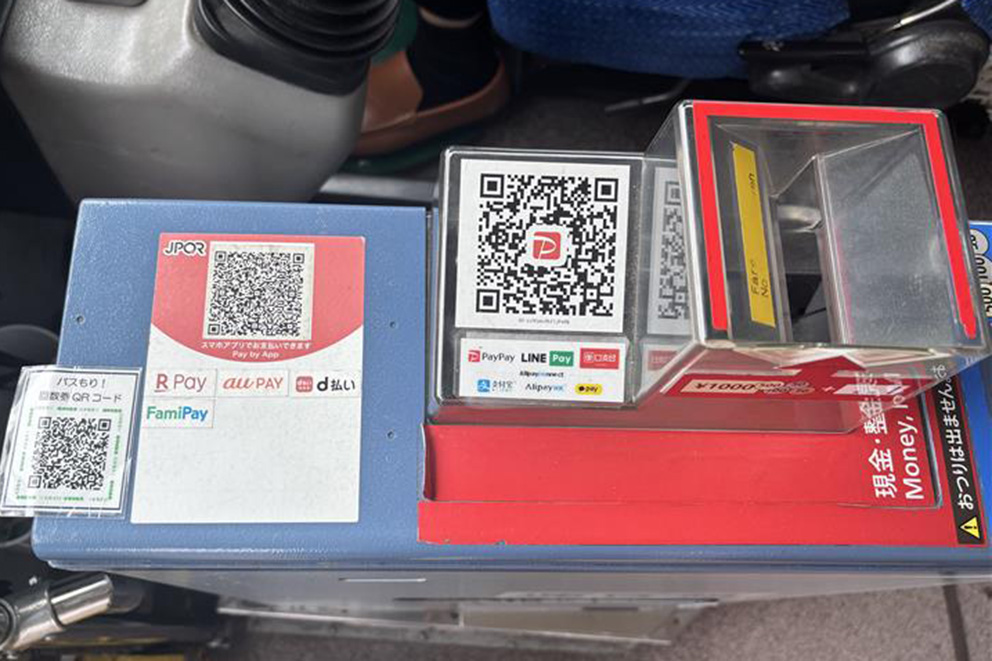
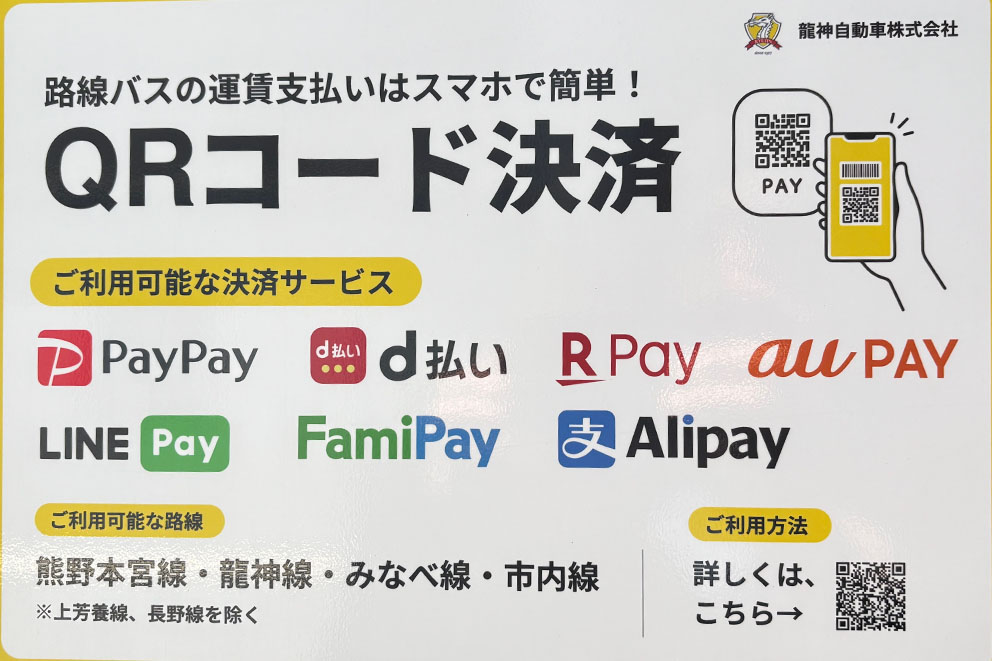
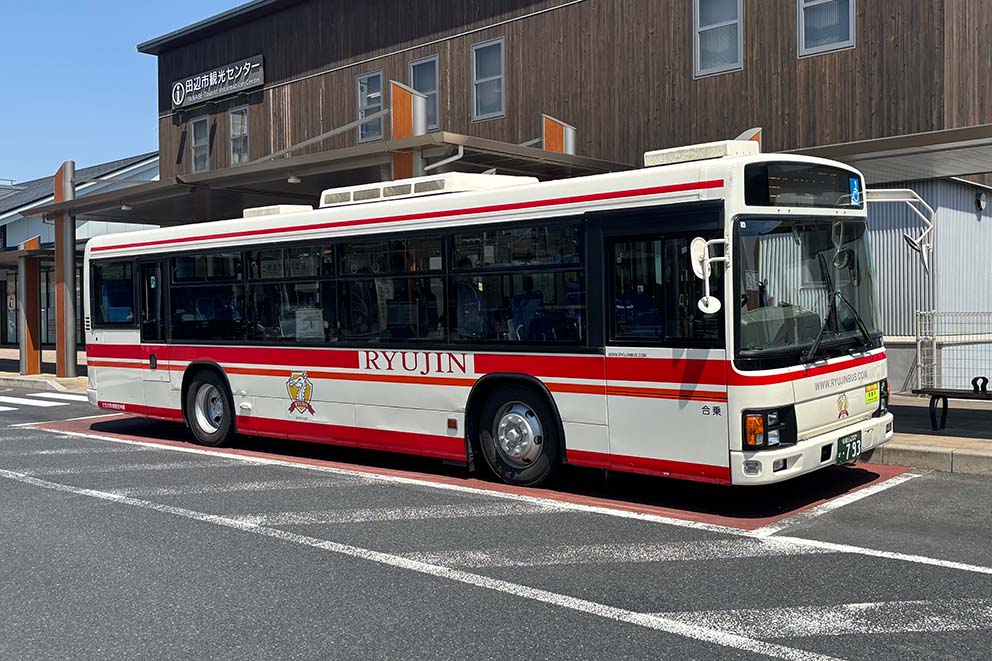
How to pay with QR code: Enter the bus as normal and take a boarding ticket. When you need to pay, tell the driver and scan the QR code to make payment.
✻ QR code payment is primarily a domestic payment system tied to Japanese bank accounts, but it also accepts Alipay, which is widely used in China, but also in many other countries in the world.
Meiko Bus Company
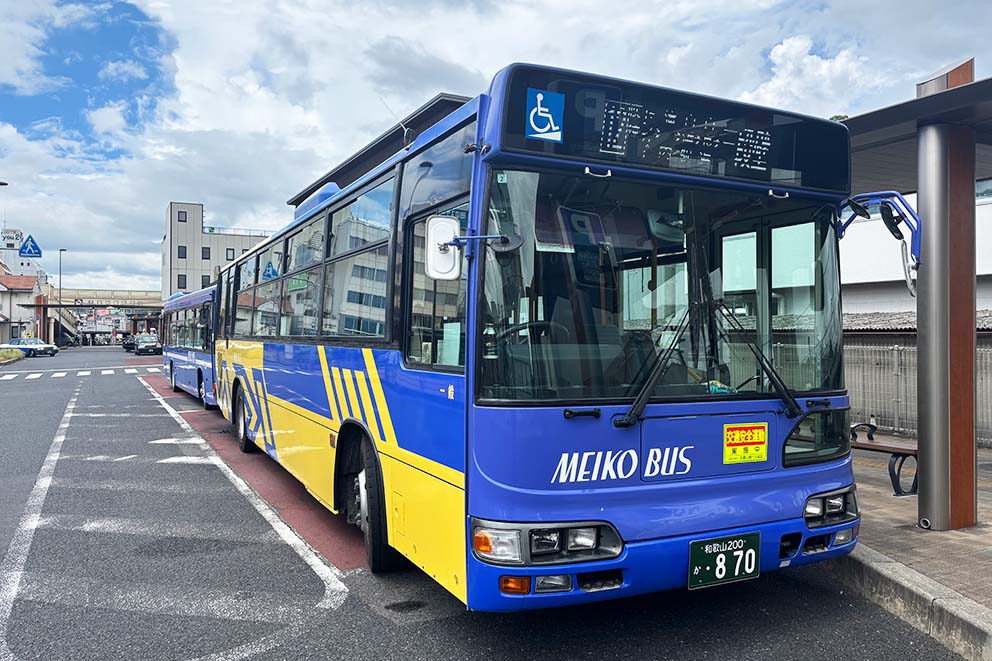
Area of Operation: Between Kii-Tanabe and Takijiri/Kurisugawa, and Shirahama
Payment Options: Cash, IC cards (most buses except #91), QR payments: PayPay, auPAY, mPay, AliPay, WeChat Pay
Does NOT accept: Credit cards
Meiko Bus Company website (English) >>
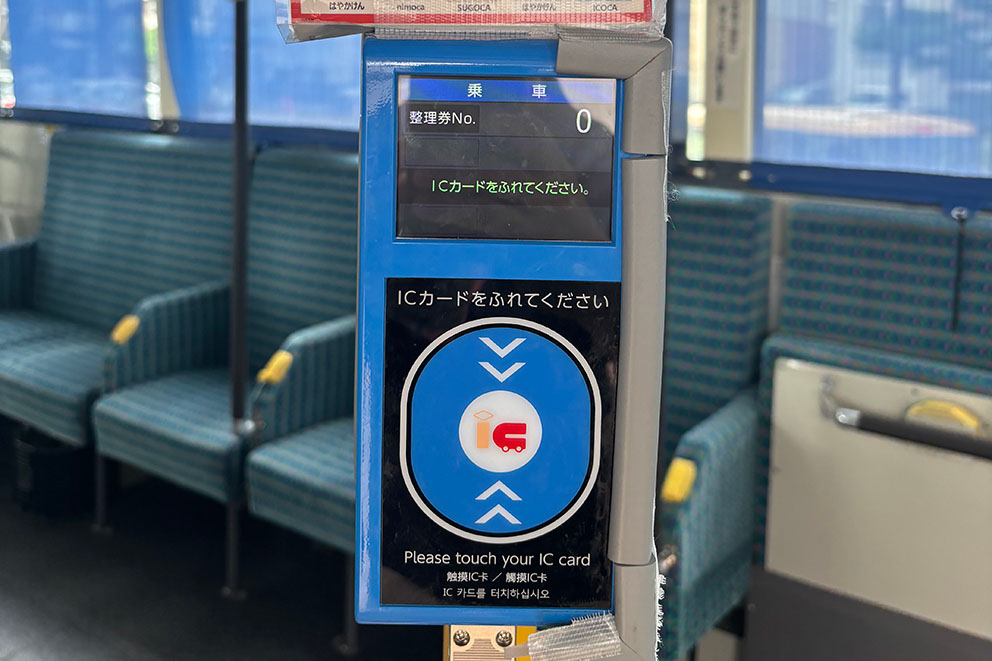
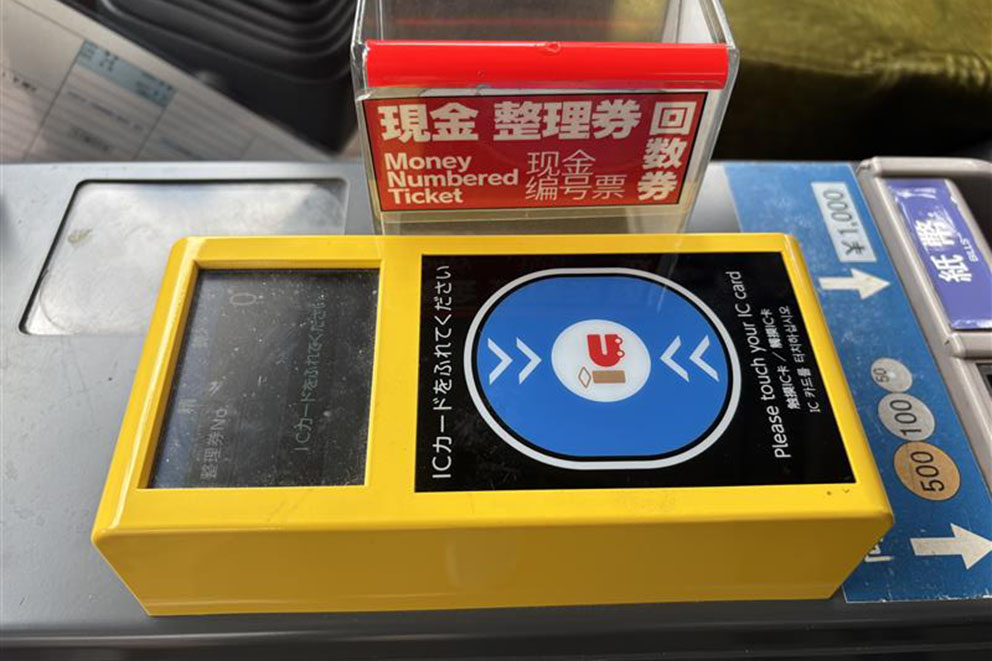
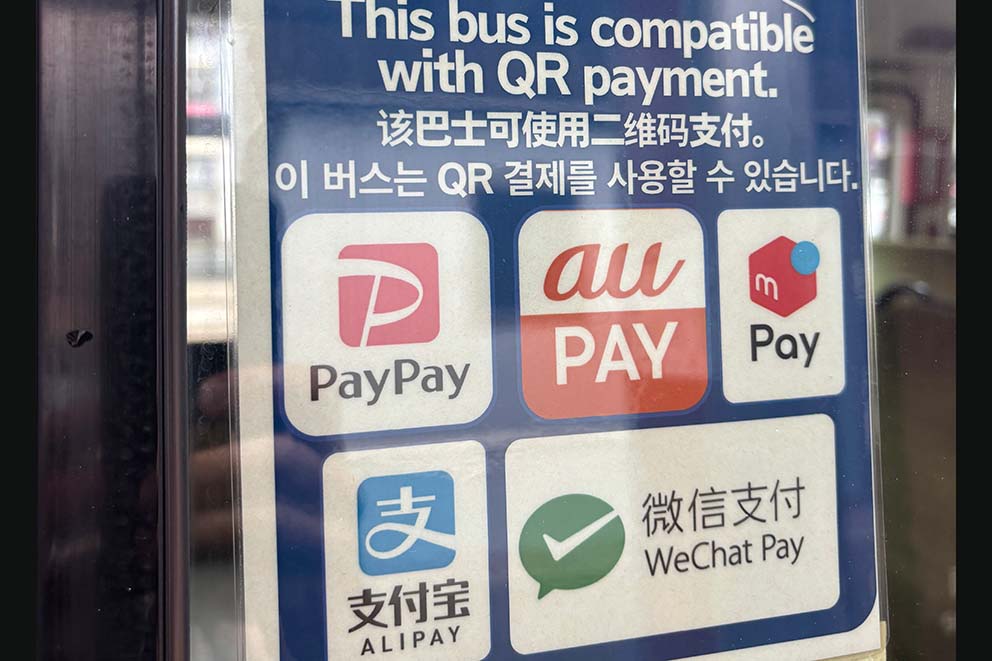
How to pay with an IC card: Touch the IC card reader when you get on the bus, then touch the reader next to the driver when you get off to pay.
✻ An IC card (which is short for “Integrated Circuit” card) in Japan is a rechargeable contactless smart card used mostly for payment on public transportation.
Kumano Gobo Nankai Bus Company
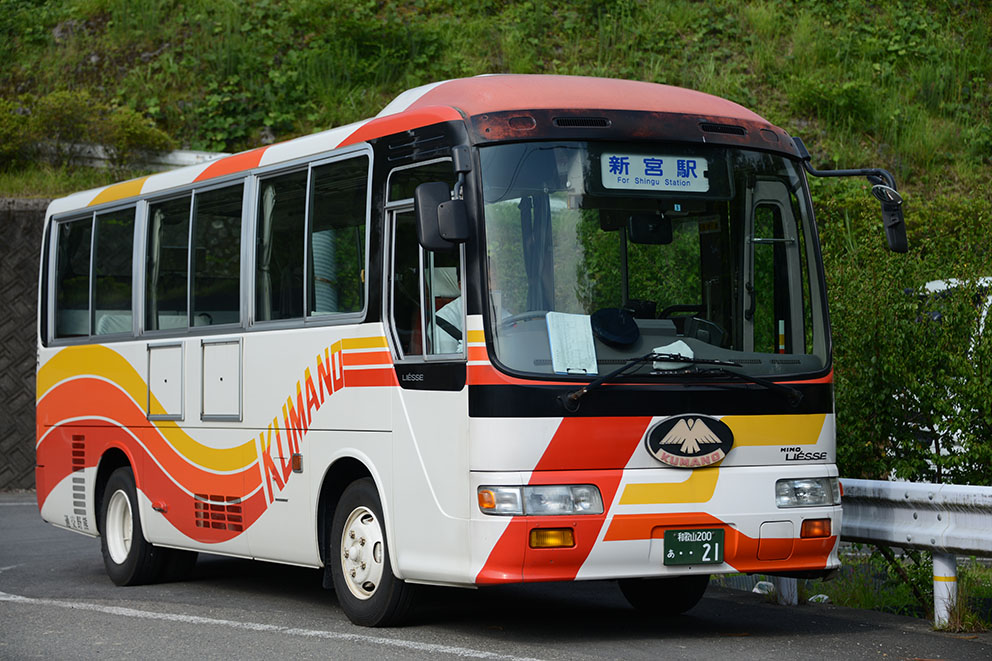
Area of Operation: Between Hongu, Shingu, Koguchi, Nachi and Katsuura.
Payment Options: Cash, credit cards (Visa, JCB, American Express, Diners Club, Discover, Union Pay, Master Card), QR payment, Apple Pay, Google Pay
Does NOT accept: IC cards
Kumano Gobo Nankai Bus website (English) >>
How to pay with a credit card: Tap your contactless-enabled card or smartphone to the card reader when you board and when you get off.
✻ If for whatever reason the reader does not recognize your card when you get on, you can still take a ticket and pay in cash.
Nara Kotsu Bus Company
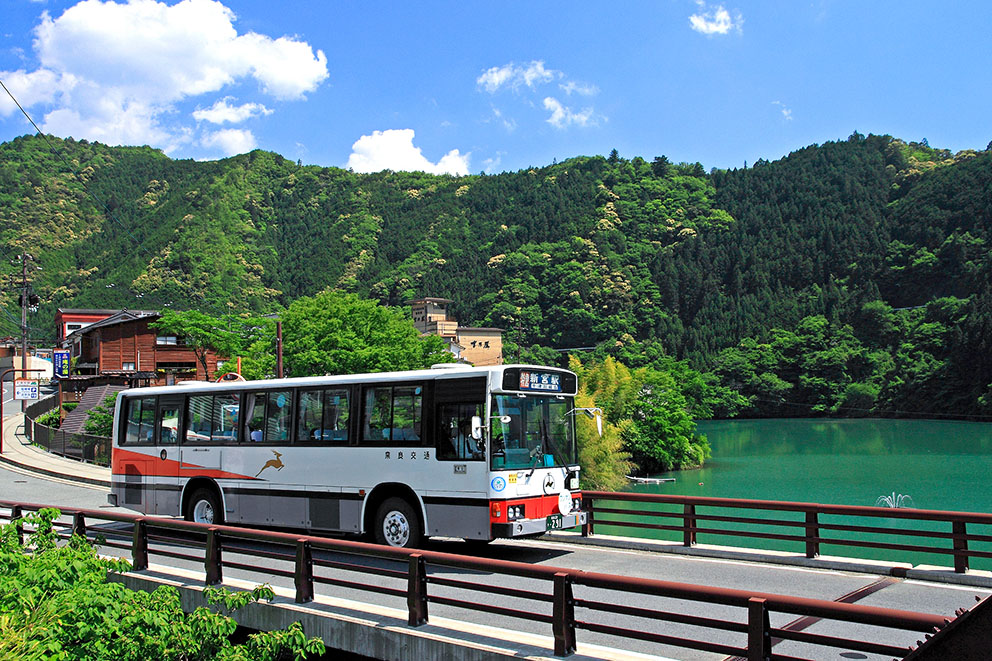
Area of Operation: Between Nara, Totsukawa, Hongu and Shingu.
Payment Options: Cash, IC cards (including the special Nara Kotsu CI-CA smart card)
Does NOT accept: QR code payments, credit cards
Nara Kotsu website (How to ride a bus) (English) >>
Peak Season
Buses can be crowded or full at certain times during peak spring and fall seasons in the area.
Tips for Riding the Bus during Peak Season>>
